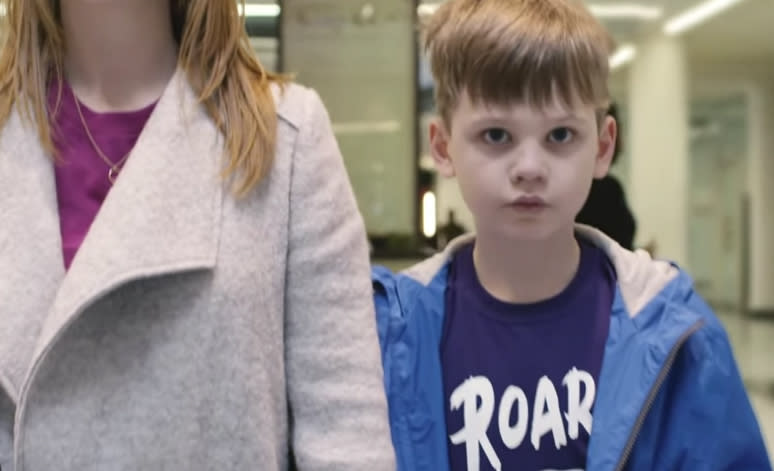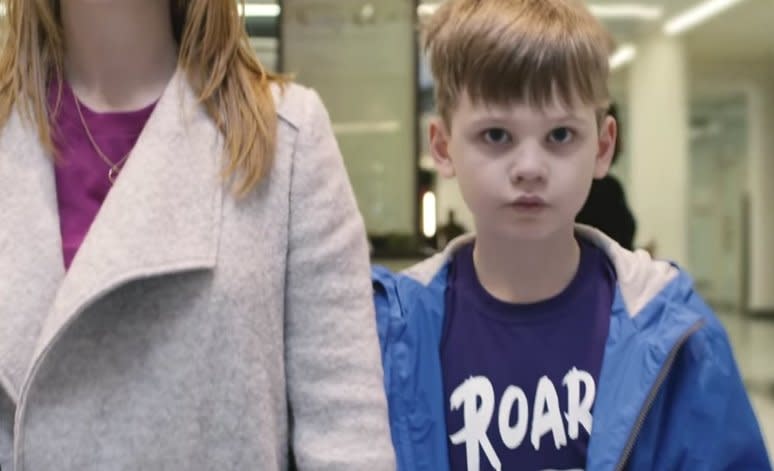Want to Know What It's Like to Have Autism? Watch This Video

A few days ago I came across a life-changing video from the National Autistic Society. The video simulates what an autistic child sees, hears, feels, and smells on a walk through the mall. Every bright light, spray of perfume, crinkle of shopping bags, sideways glance from passerbys, and much more makes it onto the child's radar, and although he tries to self-regulate, eventually he begins to meltdown. The video is stressful to watch—I felt like my senses were being assaulted—but it's also crucial to view in order to promote autism acceptance and better understand why autistic people have meltdowns when their systems are overwhelmed.
Since I deeply believe that any conversation about autism must include autistic people, I first watched this with my son, a non-verbal autistic 7-year-old who has a very hard time making it through a trip to the mall. When I asked him if it reminded him of how he feels, he said YES (using a yes/no board).
Then, I reached out to the many autistic people I know, asking them what they thought of the video and if it was an accurate representation of their own experiences. Their replies speak volumes.
Philip, a non-speaking autistic blogger, typed this reply after watching the video: "I pace and move and hum to block extra stimulation. Learn from the video. It is similar to how I experience."
Angela, an autistic adult with three children on the spectrum, said: "[This sort of sensory assault] is life, every day. It is fairly accurate, yes. Also add in that [the child in the video] can likely feel every bit of his clothing, and that holding mom's hand is hurting and uncomfortable, and that all the people looking into his eyes when he's just looking about added to the meltdown. As an adult, you learn to cope with much of it and even learn to manipulate it as you need. To a child, you are trapped."
Another autistic adult (who asked to remain anonymous) said: "This [situation in the video] looks totally normal to me. But then again, I'm Autistic. Watching it, I'm like, why did someone make this? This is just what things are like. Then I remember not everyone experiences things this way. So I suppose [it is] pretty accurate, for me, at least."
Many others chimed in, sharing how accurate this simulation was to their own daily experiences. And that made me really understand how tough it is for my son and kids like him to move through the world. The idea that my son feels "trapped" breaks my heart, and so I raised a few others questions:
How do we help kids cope when we have to just "push through" a situation like this? As in, the errand has to be run—for whatever reason, there's not another time for Mom or Dadto do it.
Is there any advice you'd offer that speaks to the idea/notion that encourages parents to push kids outside of comfort zones in order to help them learn coping skills, better prepare for adulthood, and not end up homebound?
How do we best respect our autistic kids needs/sensitivities, but also go about the business of living life and showing them the world?
Melody Latimer, an autistic mom with two children on the spectrum, shared her own experience and some great advice to answer these questions. She and her husband started the process of helping their autistic children cope in overwhelming environments from an early age. They established routines like going to the same store for the same items. The boys were always rewarded for going to the store, even if they had meltdowns, and Mom and Dad brought along many supports.
"The idea isn't to increase their tolerance," Latimer says. "That's a bad premise. That's all about keeping it inside. The idea should be to give them coping skills, strategies they can use. Headphones... Heavy jacket... Sunglasses... Fidget... Hand squeezes... Deep breathing. It doesn't matter. It could be a shopping list (whether visual or just words) or a stopwatch to help them learn how long the trips take..."
I've given Melody's words, and this video a lot of thought, and since seeing this, I've tried to pay more attention to how I can help my son manage his sensory overload, not just push through it. For us, this means some simple supports, like finding the right noise-canceling headphones and letting him wear them at the grocery store, during tough transitions, and on a recent trip to an outdoor mall (pictured above).
I'm still learning how to best help my son, but thanks to this video and these conversations with autistic adults, I now know this: The world can overwhelm autistic children and adults. Rather than trying to change them, we need to give them the supports and coping skills they need to successfully navigate a world that can be too loud, bright, smelly, and judgmental all at once.
Jamie Pacton lives in the Pacific Northwest where shedrinks loads of coffee, dreams of sailing, and enjoys each day with her husband and two sons. Find her atwww.jamiepacton.comFacebook, andTwitter@jamiepacton.


